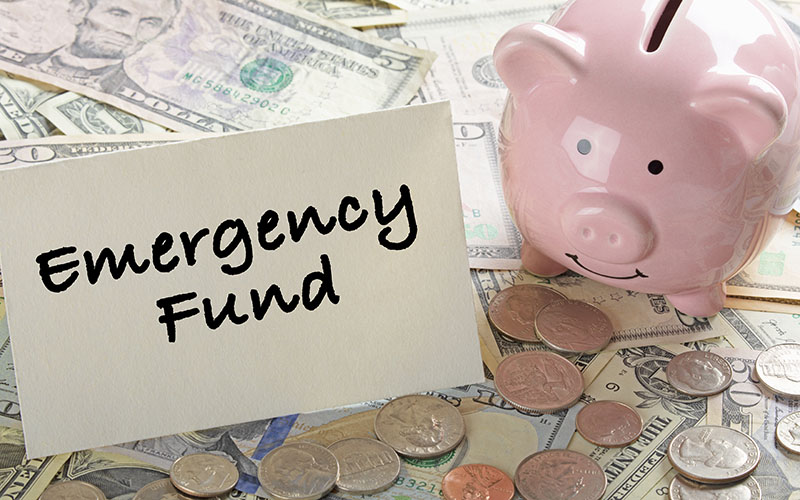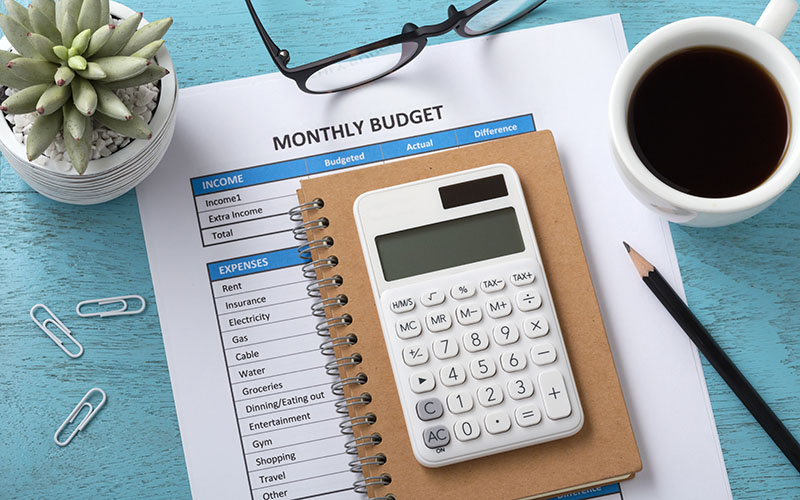7 Ways to Prepare for Retirement
Key Takeaways
- Start planning early by deciding when you want to retire and estimating how much money you’ll need
- Invest wisely, not just save—use accounts like 401(k)s, IRAs, and diversified investments for long-term growth
- Pay off debt to free up more resources for your retirement goals
- Automate savings and contributions to stay consistent and avoid overspending
- Plan for extra expenses like healthcare, long-term care, or big life goals to ensure a financially secure retirement

There’s a lot of satisfaction that can come from working a long career, not least of which is getting that paycheck every few weeks. But there will come a time when you’ll want to retire and enjoy your “golden years” without the obligation to work. Retirement doesn’t just happen, however, it demands a level of financial stability that only comes with proper planning, and it requires stowing away portions of those hard-earned paychecks to prepare for the future.
Even if you already regularly save money, you may need more to retire comfortably. If you aren’t sure whether your savings are adequate, you certainly aren’t alone. According to a survey by the Federal Reserve, only 36% of working-age Americans think their savings are on track to meet their retirement goals. To know for yourself, you must plan for how much money you will need in retirement and make a budget for getting there. Here are seven crucial steps you can follow to make sure you’re prepared for a happy retirement.

Consider When You Plan to Retire
The first step in preparation should be considering your age of retirement. Do you want to finish working by age 59? Or do you want to keep your occupation to age 70 or longer? Most Americans retire around age 64, but you must determine the age that’s right for you. Whatever you choose is the number on which your plan will hinge — before that time you’ll be saving, and after that time you’ll be spending. Of course the longer you work the longer you’ll have to save, and the later you retire, the better benefits you’ll get from Social Security.
Social Security is the federal program for retirement and disability pay. You can receive Social Security benefits only after turning 62, and the amount you get will depend on your pre-retirement income along with the age at which you retire, with maximum benefits kicking in at age 67. You can expect Social Security to cover some, but not all of your expenses in retirement, so you’ll need to determine how much extra you should save.
Determine How Much Money You Will Need in Retirement
The amount of money you’ll need is unique to you, based on how long you expect to live in retirement and the lifestyle you wish to live. Most retirees live on 70% or less of their pre-retirement income. Decide how much you’ll need to live on each month, then estimate what you might receive from Social Security, and plan for saving enough to cover the rest. You might also consider any money you wish to leave to children or your spouse, or the possibility of outliving your partner and handling finances as a widow or widower.
This thought process may seem rather grim, but these are the realities of planning for retirement, and your future self will thank you for preparing now. It’s best to talk with a financial advisor to make a detailed plan, but one tool you can use now is a simple retirement calculator available for free online. Take this as a starting point, then factor in your additional needs that may affect those numbers. From there, make a savings budget that determines how much you should allocate each month to your retirement, starting as soon as you can.
Invest Your Savings

Stowing away a portion of each paycheck is crucial for retirement planning, but saving alone is not enough. You need to also invest those savings so they have the potential to grow over time. You should know that with any investment there is some risk of losing money, so it’s important to understand the various types of investments and their level of risk, along with their growth potential.
- Stocks are small pieces of ownership in companies, which are publicly traded on a stock exchange. The value of a stock can move wildly up and down, but if you invest in a diversified portfolio of stocks in successful companies, you’ll likely see net profit over the long term.
- Bonds are a kind of loan that an individual (the bond buyer) can give to a business or a government (the bond issuer), with the condition that the issuer will pay the buyer back with interest in the future. Bonds are typically considered lower risk than stocks, but the trade-off is a relatively low level of return for most bonds. You can buy government bonds directly from the U.S. Treasury or buy corporate bonds through a brokerage firm.
- Mutual Funds are a collection of stocks and bonds that are managed by an organization and sold as shares to individual investors. Many mutual funds are designed for long-term gains with relatively low risk, making them a popular option for those investing in retirement. You can buy into mutual funds through a brokerage.
- Real Estate may be another option for investing in your retirement. To invest in real estate you could buy a house or other property that you expect to increase in value over time. Alternatively, you can invest in real estate funds or a real estate investment trust, which is a type of company that deals in real estate.
Pay Off Your Debt
If you have any debt those payments will hamper your efforts toward retirement, you should prioritize paying off loans as part of your retirement plan. The sooner you get out of debt, the less you’ll owe overall, and you could start saving that money for the future instead of paying off a past purchase. Here are some ideas for prioritizing your debts and settling them faster:
- Refinance your auto loan to save money on monthly payments;
- Refinance student loans to get a better interest rate;
- Refinance your mortgage to get a better interest rate or to raise some extra funds from home equity.
- Prioritize paying off credit cards and other high-interest debt first;
- Consolidate your higher-interest debts by taking out a personal loan;
- Finding the best rewards cards to help you receive benefits while paying off your debt.
- Consider using a rewards credit card to receive additional benefits for paying off your debt, but make sure to budget for paying off this card completely each month.
Invest in Your 401(k) or IRA
You can save money for retirement in any type of account, but there are certain types made specifically for investing for retirement. The three most common are: 401(k), Roth IRA, and traditional IRA. Most people use one or more of these as part of their retirement plan, and each type comes with unique advantages.
- 401(k) accounts are set up through employers, so you can only use this type of account if your employer offers it. The way a 401(k) works is through automated investments of a predetermined amount from your paycheck, and your employer may match some or all of that amount. The money in a 401(k) typically goes into mutual funds, and you can choose how to allocate funds in your account.
- Individual Retirement Accounts (IRAs) are available to anyone through brokerage firms, so you don’t need an employer to open one. There are multiple types of IRAs, but two are by far the most common and offer distinct tax benefits. A traditional IRA allows your contributions to be tax deductible, whereas a Roth IRA allows for tax-free withdrawals if certain conditions are met. In general, the Roth is better if you expect to be in a higher tax bracket when you retire, and the traditional is better if you expect to be in the same or lower tax bracket when you retire.
Whether you have a 401(k), an IRA, or both, the amount you contribute will depend on your individual retirement goals, but as a general rule, you should try to save 10-15% of your income each month for retirement. You may choose to put all of this in a specialized retirement account or divide it among other savings and investments.
Automate Your Savings and Investments
It can be hard to give up a chunk of your paycheck every month, even if that money is going to the future you. One way to make it easier is to automate deposits so you’ll be sure to save at least a minimum amount each month. There are two main ways you can do this:
- Set up automatic monthly transfers from your bank account into a savings account, IRA, or another type of retirement fund.
- Utilize payroll deduction through your employer, authorizing a certain portion of your paycheck to go into your 401(k) each month. You may also be able to automatically deposit a portion of your paycheck into savings or another retirement account each month.
Automatic deposits or transfers make saving easier, but they aren’t enough to take care of all the planning. You will, of course, have to budget for these amounts each month so that you don’t overspend. Additionally, you may have to check on your retirement accounts periodically and manage how your funds are invested.
Save for Other Expenses
The main consideration for prospective retirees is the amount of money you’ll have to live on each month, but you should also think about additional expenses that may come up. For example, in retirement you may want to take a big vacation, donate to charity, or start a trust fund for a grandchild. On the other hand, you may encounter serious expenses for medical bills or long-term care. It’s best to have an extra cushion of cash or insurance to pay for these. Here are some suggestions for securing extra funds:
- Budgeting extra savings is the first step in preparing for unexpected expenses. You should try to save all the extra money you can, and keep it in a savings or retirement account where you aren’t tempted to spend it too early.
- Long-term care insurance is a special type of policy sometimes bundled with life insurance that covers in-home care, assisted living, or nursing homes – expenses that health insurance and Medicaid typically don’t cover.
- Health Savings Accounts (HSAs) are special accounts that allow you to save money tax-free for healthcare expenses. You may be eligible for an HSA only if you’ve purchased a high-deductible insurance plan.
- Downsizing your home is a good way to earn extra money for retirement. Most people find that they are comfortable with less space as they get older, so you may be able to cash in on your current residence, buy something cheaper, and add the difference to your savings.
Whether you work with a financial advisor or figure it out on your own, your path to retirement will look different from everyone else’s. There’s no single best way to prepare for life after you finish working, but if you follow these basic steps in a way that makes sense for your career and your lifestyle, you can ensure the best possible comfort and health living out your golden years.
Edited by:
Bryan Huynh
•
Product Tester & Writer








